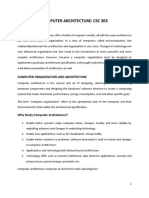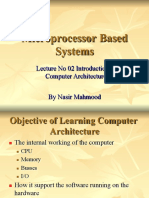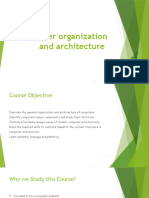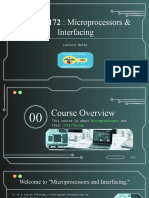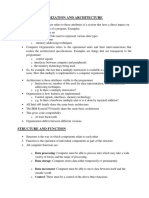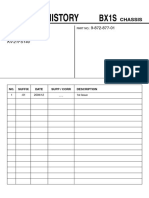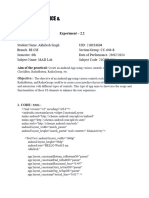0% found this document useful (0 votes)
9 views7 pagesLecture Note 1 Architecture and Organization
The document discusses the distinction between computer architecture, which encompasses attributes visible to programmers such as instruction sets and data types, and computer organization, which involves the physical implementation of these attributes. It highlights how different processors can share the same instruction set architecture (ISA) but differ in their organizational design, using examples from RISC and CISC processors. Additionally, it outlines the basic functions and structure of computers, including data processing, storage, movement, and control, along with the components of single-core and multicore processors.
Uploaded by
bookseekerreviewsCopyright
© © All Rights Reserved
We take content rights seriously. If you suspect this is your content, claim it here.
Available Formats
Download as DOCX, PDF, TXT or read online on Scribd
0% found this document useful (0 votes)
9 views7 pagesLecture Note 1 Architecture and Organization
The document discusses the distinction between computer architecture, which encompasses attributes visible to programmers such as instruction sets and data types, and computer organization, which involves the physical implementation of these attributes. It highlights how different processors can share the same instruction set architecture (ISA) but differ in their organizational design, using examples from RISC and CISC processors. Additionally, it outlines the basic functions and structure of computers, including data processing, storage, movement, and control, along with the components of single-core and multicore processors.
Uploaded by
bookseekerreviewsCopyright
© © All Rights Reserved
We take content rights seriously. If you suspect this is your content, claim it here.
Available Formats
Download as DOCX, PDF, TXT or read online on Scribd
/ 7
